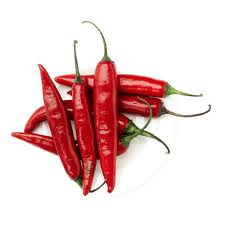 The origins of chili peppers is complex. As a new world vegetable, seeds and pollen traced to the Tehuacan Valley have been dated to over 6,000 years ago, making this an ancient delicacy. From these early roots, the chili pepper has been domesticated from the Americas to central Asia. With hundreds of varieties to choose from, you are sure to discover a new taste with each type. Once the conquistadors discovered this ancient vegetable, it was quickly brought to Europe where it remains an important ingredient in Spanish food. From smoked paprika to habanero paste, the use and diversity of chili pepper is something of a modern day marvel.
The origins of chili peppers is complex. As a new world vegetable, seeds and pollen traced to the Tehuacan Valley have been dated to over 6,000 years ago, making this an ancient delicacy. From these early roots, the chili pepper has been domesticated from the Americas to central Asia. With hundreds of varieties to choose from, you are sure to discover a new taste with each type. Once the conquistadors discovered this ancient vegetable, it was quickly brought to Europe where it remains an important ingredient in Spanish food. From smoked paprika to habanero paste, the use and diversity of chili pepper is something of a modern day marvel.
Key Nutrients
Cayenne contains a high degree of vitamin B and vitamin C. Cayenne is also known for its high vitamin C content, which is even greater than the amount of vitamin C found in oranges when compared pound for pound.
Health Benefits
Vitamin C – Regular consumption of foods rich in vitamin C helps the body develop resistance against infections and scavenges harmful, pro-inflammatory free radicals. Vitamin C also helps to prevent respiratory problems such as asthma and lung cancer. Vitamin C has been shown to lower blood pressure, and therefore lessen the probability of hypertension.
Vitamin B1 – Thiamine is an important vitamin since it breaks down sugars in the body. Thiamine also helps to support nerve and heart health.
Vitamin B6 – Vitamin B6 helps to keep your immune system in good working order. It aids in the breakdown of fats, carbohydrates and amino acids while helping to maintain the health of lymph nodes. Additionally, vitamin B6 helps to regulate blood glucose levels.
Vitamin B9 – Folate is an important vitamin for liver function.
Vitamin B12 – Vitamin B12, or folic acid, helps to preserve neurological function and DNA synthesis. It also plays a key role in the health of red blood cells. The nervous system relies on vitamin B12 for proper function as well.
Season
Being a food typical of Southern cuisines, chili pepper are grown year round in temperate climates. You can find Chili Peppers in supermarkets throughout the year for this reason.
Nutrition Information
Per 1 Pepper (14 grams):
Calories (cKal): 4
Protein (grams): .13
Total Fat (grams): .05
Carbohydrates (grams): .91
Fiber (grams): .4
Buying and Storing
Chili pepper store well in a cool, dry place for up to one week. If you place the chili pepper in the refrigerator, you can extend its life by up to two weeks. When buying, make sure the chili pepper is crisp to the touch and bright in color. Chili pepper come in a number of colors, so it is difficult to deduce its quality solely from its color. Make sure the chili pepper does not contain any holes or blemishes when buying. Before using, make sure to wash under cold water for at least 30 seconds.
Best Way to Add to Diet
Chili pepper can be added to the diet in a number of ways. First, you want to make sure you remove the inner seeds and rind before using in the kitchen. This will help to reduce the heat and bitterness when cooking. When serving raw, make sure to cut the chili pepper into a very fine dice to avoid an overly spicy dish. When cooking, a chili pepper can be used to increase the taste and complexity of almost any recipe, from paella to an omelet.
Chili Pepper Recipe

 Not Sure What Healthy Foods To Eat?
Not Sure What Healthy Foods To Eat? This week we take a look at one of my favorite healthy foods...the mighty Avocado.
This week we take a look at one of my favorite healthy foods...the mighty Avocado.
No comments yet.